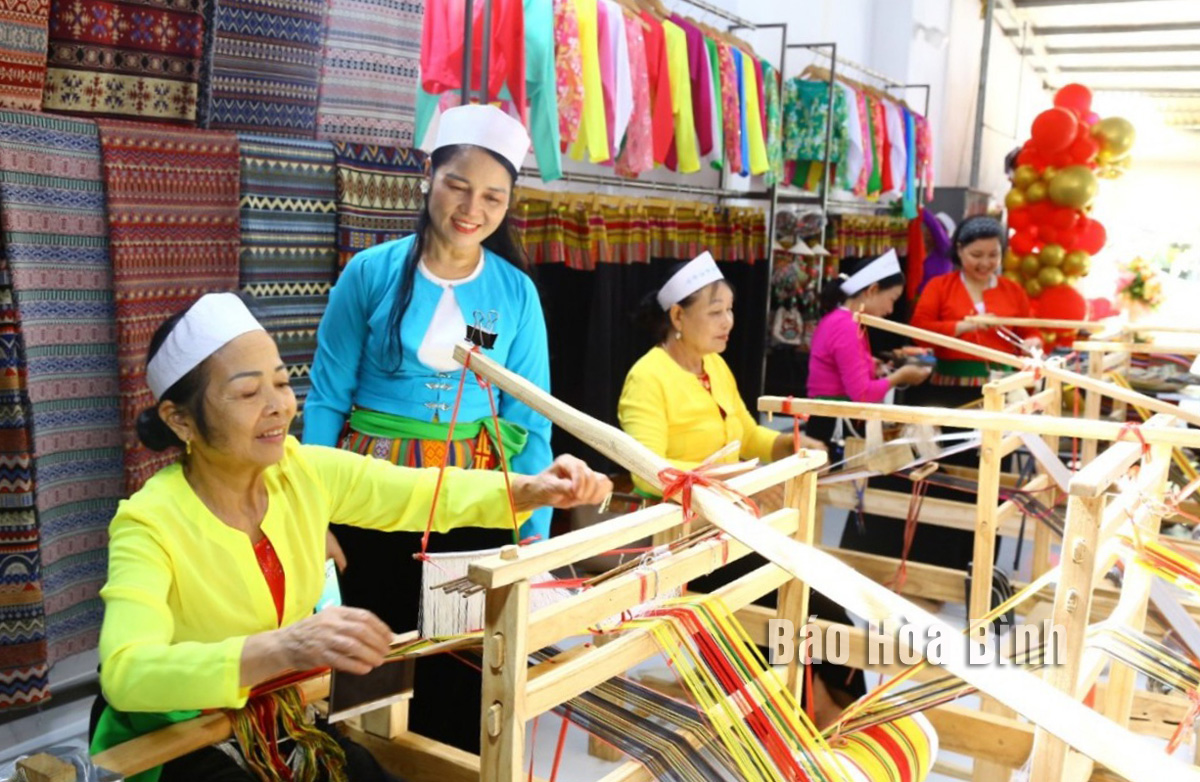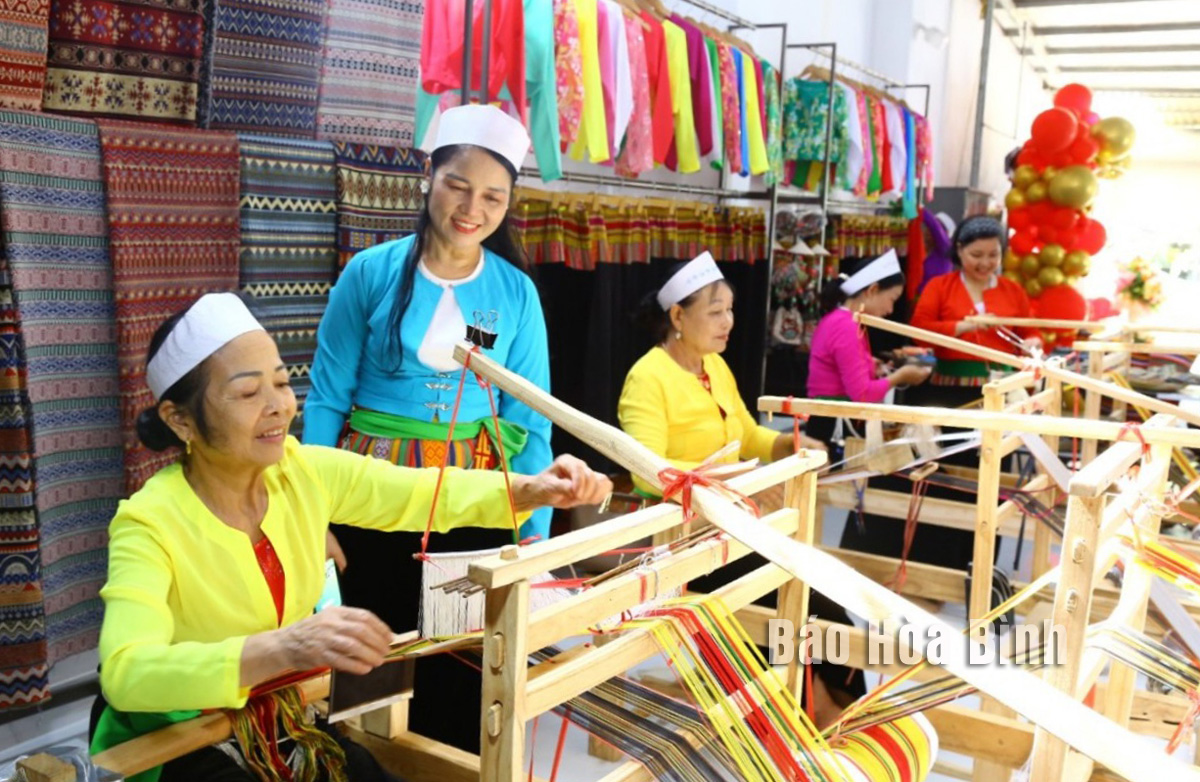
Thanh Cong Cooperative, established in 2019 in Dan Chu ward, Hoa Binh city, has provided vocational training for rural, ethnic minority labourers, while helping them in selling bamboo, rattan, and brocade products, and preserving the Muong people’s culture.
Thanh Cong Cooperative in Dan Chu ward, Hoa Binh city, has helped preserve and promote brocade weaving, and create jobs for locals.
Phung Thi Tiep, from Mat Tren hamlet, Dan Chu ward, said in 2010, she and other five women in the neighbourhood established a brocade weaving group, and they then joined Thanh Cong Cooperative.
"Brocade weaving helps raise income for my family,” she said.
Quach Thanh Cong, director of the cooperative, said with its members being locals who have experience in rattan, bamboo, and brocade weaving, Thanh Cong offers unique products.
From a membership of only seven, the cooperative now gathers 20 official members, and around 40 seasonal workers, he added.
To continue preserving cultural traits in brocade weaving and generating jobs for rural, ethnic minority people, the cooperative has coordinated with the farmers’ unions of Dan Chu and other communes and wards in organising refresher courses for its members and local women.
In 2022 and 2023, there were four training classes for industrial sewing with 120 members, two for bamboo and rattan weaving with 60 members, and two others for brocade weaving with 60 members, helping satisfy workforce demand of businesses and craft villages in the locality.
Last year, the cooperative’s revenue exceeded 3.3 billion VND (130,499 USD), and the average monthly income of its labourers reached 11.9 million VND.
Nguyen Duc Thinh, Chairman of the Dan Chu Ward People’s Committee, said the Muong people make up over 40% of local population, expressing his hope that Thanh Cong Cooperative will create more jobs to raise income for rural labourers, contributing to local socio-economic development.
With an increasingly vibrant and widespread emulation movement aimed at building cultured residential areas and cultured families, Yen Thuy District has been making steady progress toward improving both the material and spiritual well-being of its people, while fostering a civilized, prosperous, beautiful, and progressive community.
Once lacking recreational spaces and community facilities, Residential Group 2 in Quynh Lam Ward (Hoa Binh City) has recently received attention for the construction of a new, spacious, and fully equipped cultural house. The project followed the model of state support combined with public contributions in both labor and funding.
The "All people unite to build cultural life" movement, which has been effectively integrated with Kim Boi district’s socio-economic development goals, is fostering a lively spirit of emulation across local residential areas, hamlets, villages, public agencies, and enterprises. In addition, through the initiative, traditional cultural values are being preserved and promoted, while community solidarity and mutual support in poverty reduction and economic development are being strengthened.
A working delegation of the Hoa Binh provincial People’s Committee led by its Permanent Vice Chairman Nguyen Van Toan on June 11 inspected the progress of a project to build the Mo Muong Cultural Heritage Conservation Space linked to tourism services in Hop Phong commune, Cao Phong district.
Born and growing in the heroic land of Muong Dong, Dinh Thi Kieu Dung, a resident in Bo town of Kim Boi district, in her childhood was nurtured by the sweet lullabies of her grandmother and mother. These melodies deeply imprinted on her soul, becoming an inseparable part of her love for her ethnic group's culture. For over 20 years, this love for her hometown has driven Dung to research, collect, and pass down the cultural values of the Muong people to future generations.
In the final days of May, the Ethnic Art Troupe of Hoa Binh Province organized performances to serve the people in remote, mountainous, and particularly disadvantaged areas within the province. These were not just ordinary artistic shows, but they were the meaningful journeys aimed at spreading cultural values, enhancing the spiritual life of the people and contributing to the preservation of ethnic minority cultural identities.



